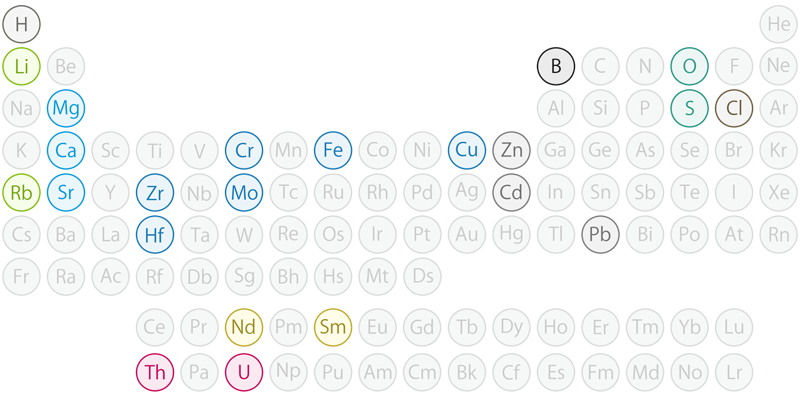Facilities |
| IGL equips with high-precision mass spectrometry for trace elemental and isotopic analyses, including ICP-MS, MC-ICP-MS, TIMS & CRDS. |
Mass Spectrometry
Thermal ionization mass spectrometry (TIMS) and inductive coupled plasma mass spectrometry (ICP-MS) are the two most essential techniques in IGL Earth sciences and oceanography researches. ICP-MS, Element 2 & Element XR, provides an effective way to determine simultaneously of multi-element concentration and isotopic ratios in the natural specimen. MC-ICP-MS, Neptune, takes advantage of the high sensitivity of ICP-MS, the high stability of the magnetic sector instrument (e.g., TIMS), and the high precision of multi-collector system and has become one of the best tools for geological dating and chemical tracing researches. TIMS, Triton TI, enjoys its high ionization stability and its multi-collector, which can produce the most precise concentration and isotopic determinations. Recent applications focus on human-life related issues, including the effects of greenhouse gases, ocean acidification, seawater circulation, environmental pollution, and global climatic changes.
Up to 23 Isotopic Analytical Techniques

For stable, radiogenic, and non-traditional stable isotopes, IGL has up to 23 developed isotopic analytical techniques on MC-ICP-MS, TIMS, and CRDS.
So far, IGL has published over 10 SCI papers for technical improvement.
Cavity Ring Down Spectroscopy
Picarro isotopic analyzer L2120-I has advantages for in situ measurement at fields without any chemical pretreatment and for simultaneous analyses of oxygen and hydrogen isotopes. Current applications of the Picarro H2O analyzer are time-series monitoring of atmospheric moisture oxygen and hydrogen isotopes and natural waters, e.g., rainwater, stream, groundwater, and marine porewater.
Isotope Geochemistry Laboratory © 2008-2025 |
